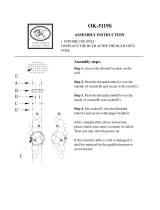
el 5
The heat relay transfers the voltage to the heat contactor coil,
energizing this coil, then the elements begin to heat. The
elements not heating could be caused by a faulty relay.
1. Remove electrical power supplied to the unit.
I
WARNING
Remove the electrical power supplied to the fryer by
unplugging the unit, or turning off the wall circuit
breaker, or electrical shock could result.
2. Remove the Phillips head screws from the control panel.
Then lift the complete control panel up and out of position,
leaving the connectors attached.
The following checks are performed with the wall
circuit breaker on, and the COOK/PUMP Switch in the
“COOK” position, Extreme caution should be taken.
Make connections before applying power, take reading,
and remove power by unplugging the power cord, or
by turning off the wall circuit breaker before remov-
ing meter leads, or electrical shock could result.
3. Take a voltage check across the N.O. terminal which has
wires 5A and 22A attached, and terminal COM which has
wires 6A and 27A attached. If zero voltage is detected,
the relay is good. If 208 or 240 volts is found, continue
on to the next step.
4. Remove power to unit, and then move wire numbers 58
and 22A to the NC terminal, on the opposite side of the
relay.
5. Turn power back on and turn the COOK/PUMP switch
to the “COOK” position.
6. If unit now heats up the relay needs to be replaced. If the
unit does not heat up, and a voltage check from the NC
terminal to the COM terminal shows 0 volts, the relay is
good and a problem lies somewhere else.

























